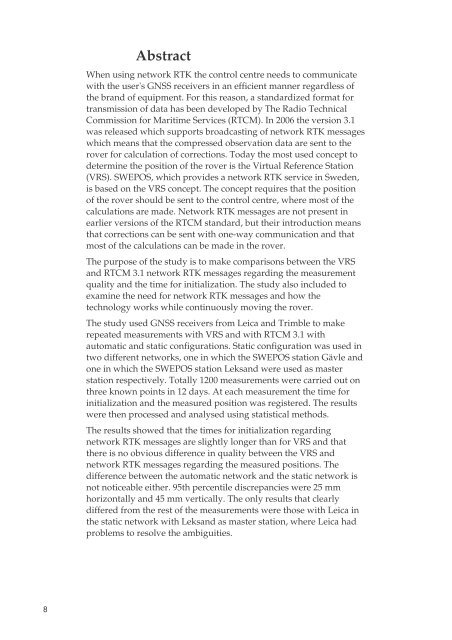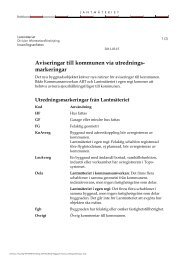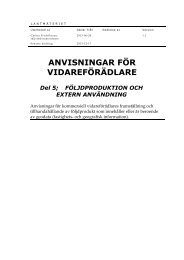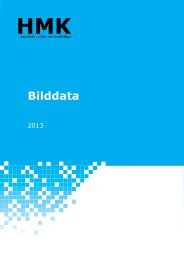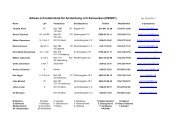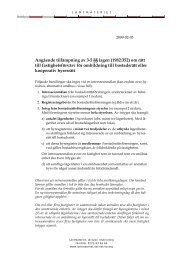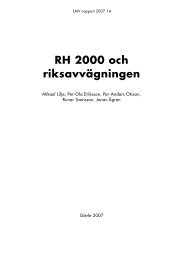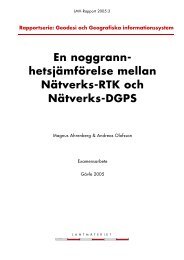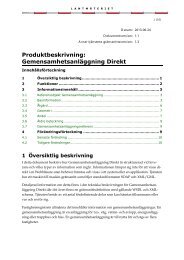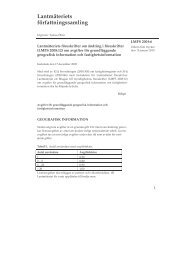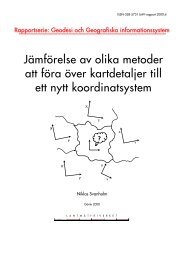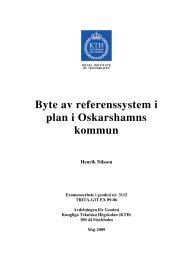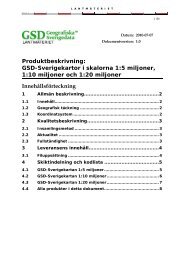LMV-rapport 2008:4 - Lantmäteriet
LMV-rapport 2008:4 - Lantmäteriet
LMV-rapport 2008:4 - Lantmäteriet
You also want an ePaper? Increase the reach of your titles
YUMPU automatically turns print PDFs into web optimized ePapers that Google loves.
AbstractWhen using network RTK the control centre needs to communicatewith the user's GNSS receivers in an efficient manner regardless ofthe brand of equipment. For this reason, a standardized format fortransmission of data has been developed by The Radio TechnicalCommission for Maritime Services (RTCM). In 2006 the version 3.1was released which supports broadcasting of network RTK messageswhich means that the compressed observation data are sent to therover for calculation of corrections. Today the most used concept todetermine the position of the rover is the Virtual Reference Station(VRS). SWEPOS, which provides a network RTK service in Sweden,is based on the VRS concept. The concept requires that the positionof the rover should be sent to the control centre, where most of thecalculations are made. Network RTK messages are not present inearlier versions of the RTCM standard, but their introduction meansthat corrections can be sent with one-way communication and thatmost of the calculations can be made in the rover.The purpose of the study is to make comparisons between the VRSand RTCM 3.1 network RTK messages regarding the measurementquality and the time for initialization. The study also included toexamine the need for network RTK messages and how thetechnology works while continuously moving the rover.The study used GNSS receivers from Leica and Trimble to makerepeated measurements with VRS and with RTCM 3.1 withautomatic and static configurations. Static configuration was used intwo different networks, one in which the SWEPOS station Gävle andone in which the SWEPOS station Leksand were used as masterstation respectively. Totally 1200 measurements were carried out onthree known points in 12 days. At each measurement the time forinitialization and the measured position was registered. The resultswere then processed and analysed using statistical methods.The results showed that the times for initialization regardingnetwork RTK messages are slightly longer than for VRS and thatthere is no obvious difference in quality between the VRS andnetwork RTK messages regarding the measured positions. Thedifference between the automatic network and the static network isnot noticeable either. 95th percentile discrepancies were 25 mmhorizontally and 45 mm vertically. The only results that clearlydiffered from the rest of the measurements were those with Leica inthe static network with Leksand as master station, where Leica hadproblems to resolve the ambiguities.8


